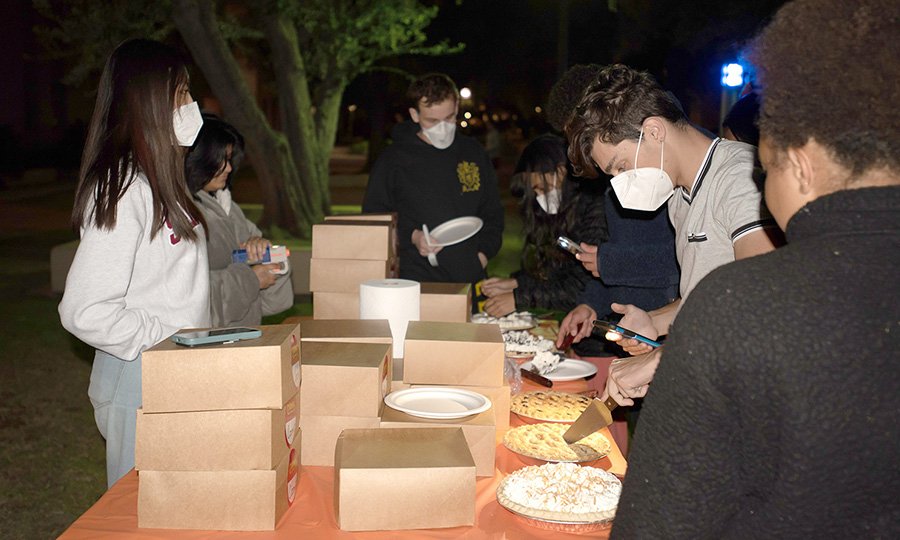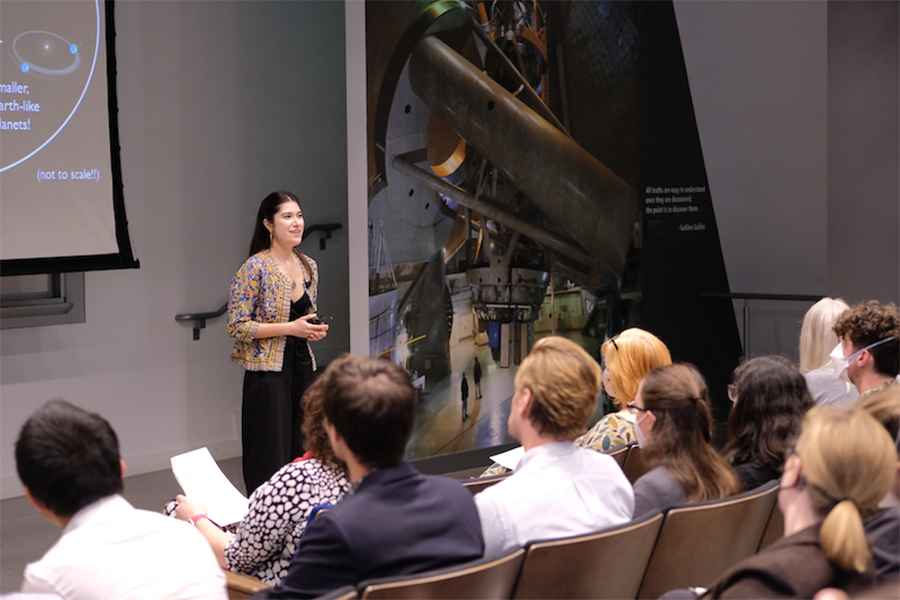The Traditions That Make Caltech
The annual events that define the Caltech experience, such as Ditch Day, which occurs on May 20 this year, both create and reflect the Institute’s culture of innovation and creativity.
Every university has its annual rituals and traditions. Caltech’s are closely tied to the identity and culture of the Institute as a whole, calling upon students to build robots, solve intricate puzzles, and innovate solutions to solve complex problems. Many of these annual traditions had to happen online during the COVID-19 pandemic, but most have returned to in-person status by 2022, much to the delight of Caltech undergraduates.
“Were we to graduate virtually, all of the traditions celebrating the achievements of the senior class and how each house sends off its seniors would have been gone,” says graduating senior Diego Olaya. “Things like Ditch Day, Interhouse, rotation, and even how the houses interact with prospective students when they come visit, are passed down from class to class by experience and repetition. Some houses have not had an Interhouse that anyone younger than us remembers. Our class is the only class on campus that has ever had an in-person Ditch Day. Those are extremely valuable parts of the Caltech experience that we came very close to losing. Thankfully, we didn't.”
Pi Day
Pi shows up everywhere in nature, and on March 14, it shows up everywhere at Caltech, too. Because the first digits of pi are 3.1415926, students on 3/14 attend an annual pie-eating celebration at precisely 1:59 a.m. where 26 kinds of pie are served. Techers celebrate the famous digits in other ways such as building a paper chain with each piece of paper containing a sequential digit of pi.
Pumpkin Drop
In theory, when ultracold gourds crash into the ground after a nine-story fall, they should, or at least could, give off a spooky glowing spark because of the phenomenon of triboluminescence. That’s the scientific reason, anyway, that students gather every Halloween to hurl liquid-nitrogen-frozen pumpkins from the rooftop of Caltech Hall and watch them splatter into smithereens on the hard ground below. It’s also just a lot of fun.
Pumpkin Drop, also known as “Splatterday,” dates back to 1972, when Dabney House students first tossed pumpkins from the highest point of their residence.
Ditch Day
A century ago, Ditch Day was just what its name suggests. Starting in 1921, seniors ditched class and vanished from campus for a day. Soon thereafter, though, the annual occurrence transformed into something more: a beloved Caltech tradition defined by “stacks.”
Stacks started as a defense mechanism to prevent younger students from wreaking havoc on seniors’ rooms when they ditched campus. In time, they became a series of increasingly intricate scavenger hunts, mazes, and challenges, as Ditch Day became a day to leave classes behind not for pranks but for themed puzzles that require the intelligence and teamwork typical of Caltech students. Held remotely in 2020 and 2021 because of the pandemic, Ditch Day returned to campus for 2022.
ME 72
In this course, the final exam is a battle royale.
The ME72 Engineering Design Laboratory, taught by Michael Mello (PhD '12), is a two-term course in which students design and build rugged robots for a particular task, knowing that at the end of the course their machine will face off against other students’ in competition. In 2020, for example, amphibious robots fought for control of floating towers in the pond outside Caltech Hall.
ME 72 went online-only in 2021 because of the COVID-19 pandemic. But in spring 2022, masked and vaccinated students returned to working together in person at the Jim Hall Design and Prototyping Lab in the sub-basement of the Eudora Hull Spalding Laboratory of Engineering. They took on a challenge based on the international competition called "SumoBot," in which robots attempt to push one another out of a ring in a mechanical approximation the sport of sumo.
Three Minute Thesis
It’s not often a person can win $3,000 in three minutes. Graduate student Aida Behmard did just that in April 2022 by taking the grand prize in the Three Minute Thesis (3MT) competition with her presentation, “Planets on a Galactic Scale,” which covered her work analyzing telescope data to search for exoplanets, or worlds that orbit other stars. “What we found is surprising,” she said. “Most exoplanets are totally unlike the planets in our solar system.”
3MT challenges grad students to give a three-minutes-or-less talk that explains their research in a clear and compelling way that’s also accessible to an audience of nonexperts. Watch the 2022 talks here.
Caltech Space Challenge
Typically held every two years, the Caltech Space Challenge asks its participants to design an entire space mission in the span of a week. In March 2022, 32 students with a passion for spaceflight came to campus and had five days to draw up a mission to analyze liquid lakes on the surface of Saturn’s moon Titan.
The challenge was founded in 2011 is hosted by the Keck Institute for Space Studies (KISS) and the Graduate Aerospace Laboratories at Caltech (GALCIT). Previous iterations asked participants to design missions that would visit a near-Earth object, land on a moon of Mars, mine an asteroid, build a supply station on the moon, and travel to Enceladus, another moon of Saturn.
Interhouse
Throughout each academic year, the houses that make up Caltech’s house system trade off playing host to all-undergraduate parties. This rich tradition is equal parts social event and engineering extravaganza of DIY ingenuity and one-upmanship. Each house chooses a theme for the get-together it hosts and puts its engineering know-how to work to construct elaborate sets, light shows, mazes, and murals from scratch.
For examples, for its 2022 “Alice and the Chocolate Factory” theme, a mashup of Alice in Wonderland and Charlie and the Chocolate Factory, Dabney House filled its courtyard with a 20-foot-tall geodesic dome decorated like a giant glowing mushroom and decorated the house with suspended origami, fluorescent mushrooms, chess, and subatomic particles. Each year, Venerable House builds a dance platform and paints wallboards and an old piano to match the theme. (Upperclassmen in charge of the project, called “griffins,” get dunked in water if they fail to devote as many hours during the final week of preparation as the underclassmen do.) For Ricketts House’s last Interhouse before the pandemic, students worked to create glowing line-art murals out of wire and rigged a circuit to switch at midnight to change the murals and transition to a second, mystery theme.







